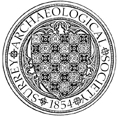Foxborough Park, Redhill
Evaluation in advance of redevelopment of this industrial site, in the vicinity of the medieval settlement of Wiggie, was carried out by R Poulton of SCAU for Schroder Exempt Property Unit Trust. The evaluation revealed that much of the site had been disturbed, presumably during the construction of the existing buildings. The northern third of the site was found not to have been affected, but no features or finds of archaeological interest were noted in this area. (321)


